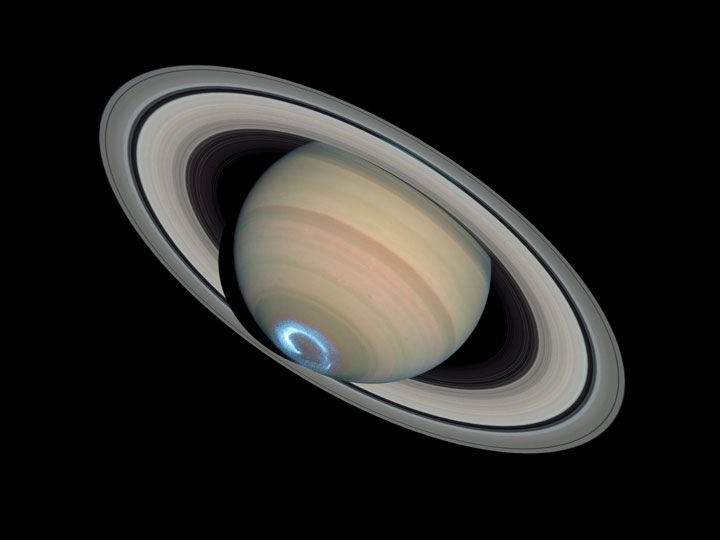TORONTO – If you’ve never seen the northern or southern lights here on Earth, now you can watch them dance in the atmosphere of Saturn.

NASA’s Cassini spacecraft that is currently orbiting Saturn, as well as the Earth-orbiting Hubble Space Telescope, captured the curtain-like auroras at its north pole in the spring of 2013. The space agency released the images and videos on Tuesday.
The first set of images in the video are taken in ultraviolet light from Hubble on April 5, 2013. The second set of ultraviolet images were taken by Cassini.

Get daily National news
Saturn’s auroras are caused by the same thing that causes Earth’s northern and southern lights: the sun.
READ MORE: Northern lights dance across southern Ontario sky
The sun blows out charged particles that travel along its solar wind. Like Earth, Saturn has a magnetic field. It’s magnetic field is almost 600 times as powerful as our own. When the sun’s particles interact with the magnetic field, it causes auroras, beautiful glowing lights in the upper atmosphere.
However, scientists still don’t understand why the gas giant experiences such a fickle pattern of aurorae or why they occur so far from the sun.
“Saturn’s auroras can be fickle — you may see fireworks, you may see nothing,” said Jonathan Nichols of the University of Leicester in England, who led the work on the Hubble images.
“In 2013, we were treated to a veritable smorgasbord of dancing auroras, from steadily shining rings to super-fast bursts of light shooting across the pole,” he said.
On Earth, the most common colour of auroras is green on bottom and red at top. However, on Saturn, the visible light data aquired by scientists found that it’s red at bottom and purple on the top. The difference has to do with molecules.
Molecules in Earth’s upper atmosphere are nitrogen and oxygen; Saturn’s are mainly hydrogen.
“While we expected to see some red in Saturn’s aurora because hydrogen emits some red light when it gets excited, we also knew there could be color variations depending on the energies of the charged particles bombarding the atmosphere and the density of the atmosphere,” said Ulyana Dyudina, an imaging team associate at the California Institute of Technology, Pasadena, Calif.
“We were thrilled to learn about this colorful display that no one had seen before.”
But since Saturn has a thick gaseous atmosphere and no real surface, no one will ever be able to see the beautiful aurora from below.



Comments